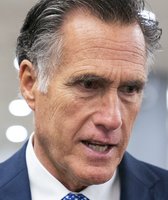Stand up for the facts!
Our only agenda is to publish the truth so you can be an informed participant in democracy.
We need your help.
I would like to contribute
SUMMARY: Clinton and Richardson are right that Americans are frustrated with long college aid forms, but their numbers don't add up.
We've all muddled through the 1040, studied our W-2 and, if we wanted flood payments, filled out the FF-81-42.
Heck, the government has so many forms it even has a Web site to help you find the one you need — www.forms.gov.
So perhaps it should come as no surprise that as candidates for president talk about their goals, more than one talks about reducing the amount of time needed to complete paperwork. And with the application period fast approaching for folks seeking financial aid for college, the U.S. Department of Education's Free Application for Federal Student Aid — that's FAFSA in government-speak — is a target.
Sen. Hillary Clinton and Gov. Bill Richardson, both vying for the Democratic nomination, have taken direct aim at the five-page form. And they relied on the same Brookings Institution paper, "College Grants on a Postcard," to formulate their positions.
Clinton homed in on the length of time Americans spend filling out the FAFSA. "Americans spend 100-million hours a year filling out these forms," she said during an October news conference on college costs. "That is the equivalent of 55,500 full-time jobs."
She called the forms "tedious, confusing and 100 percent unnecessary."
Richardson, the New Mexico governor, focused on the form's complexity.
"The forms that families have to fill out to get college aid, the FAFSA, is 127 questions. That's longer than the form to get U.S. citizenship," he said during an October 2007 speech. "Something's wrong when it's more complicated to get money for school than it is to become an American citizen. I will tear up those forms and replace them with a postcard-sized form."
Check out our rulings on their numbers. We gave Clinton a Half True and gave Richardson a False .
The underlying message resonates with application-weary Americans, but it can't find closure in the halls of Congress.
As far back as 2003, the Department of Education's Advisory Committee on Student Financial Assistance recommended simplifying the financial aid application process. Reps. Rahm Emanuel, a former Bill Clinton staffer, and Buck McKeon, a conservative California Republican, filed the Federal Aid Simplification Act. The bill, similar to one McKeon filed in 2002, mandated a full review of the financial aid application with an eye to making it easier to complete.
It never made it to the floor.
Since then, the Department of Education has cut back on paper FAFSA applications, hoping to funnel more applicants to the Web, where a prepared applicant can complete the form in about an hour, officials say.
That made the process easier, said Erin Hathaway, spokeswoman for the New Hampshire Center for College Planning. But it's still daunting, she added.
House Education and Labor Committee chairman George Miller, the California Democrat who co-authored No Child Left Behind, recently announced a bill (HR 4137) that would, among other things, further simplify the FAFSA. It would cut the form to a two-page EZ version and encourage the Education Department to coordinate with the IRS to make better use of information the government has from other forms.
The Senate adopted a similar piece of legislation (S 1642) in the summer of 2007.
"In addition to skyrocketing college prices, other roadblocks on the path to college include student loan programs that have been mired in scandal and a federal student aid application process that could confuse even the most experienced tax experts," Miller said in November 2007 while introducing the legislation. "Our bill will ensure that our higher education programs once again operate in the best interests of students and their families."
A welcome thought for all of us who say "ugh" to forms.
Our Sources
Department of Homeland Security, "Application for Naturalization Form N-400"
U.S. Department of Education, Federal Student Aid Web site, "The Application Questions," 2007-08 FAFSA form
U.S. Department of Education, Federal Student Aid Web site, "Time to complete" page
U.S. Department of Education, Information for Financial Aid Professionals Library, "Total FAFSA forms filed through September 2007," October 2007
Interview, Meihua Zhai, director of research, National Association of Student Financial Aid Administrators, Nov. 13, 2007
The Brookings Institution, "College Grants on a Postcard: A Proposal for Simple and Predictable Federal Student Aid," February 2007
U.S. Department of Education, Advisory Committee on Student Financial Assistance, "The Student Aid Gauntlet," January 2005
U.S. House Committee on Education and Labor, "Press release on legislation to simplify financial aid forms," March 2007













































